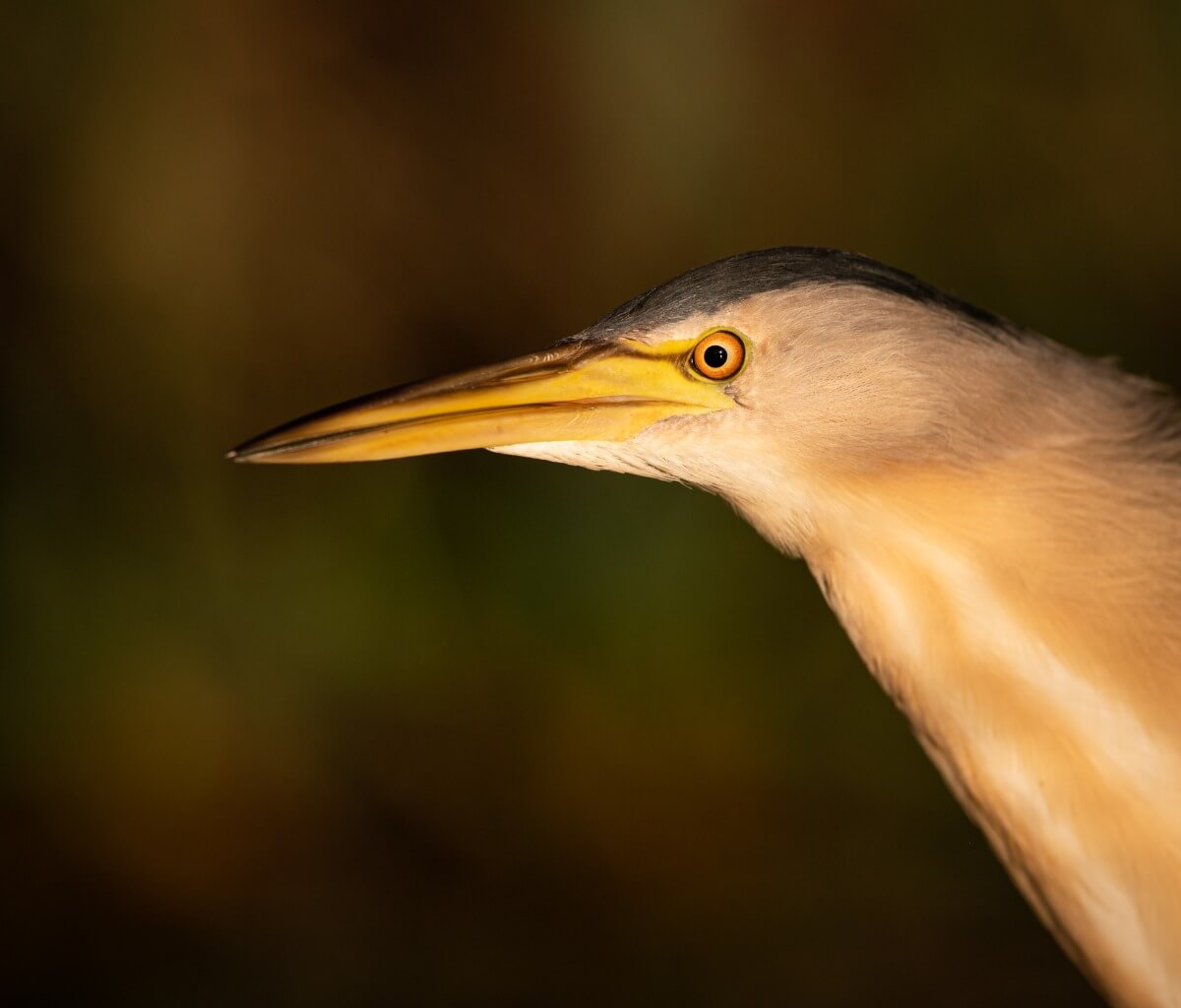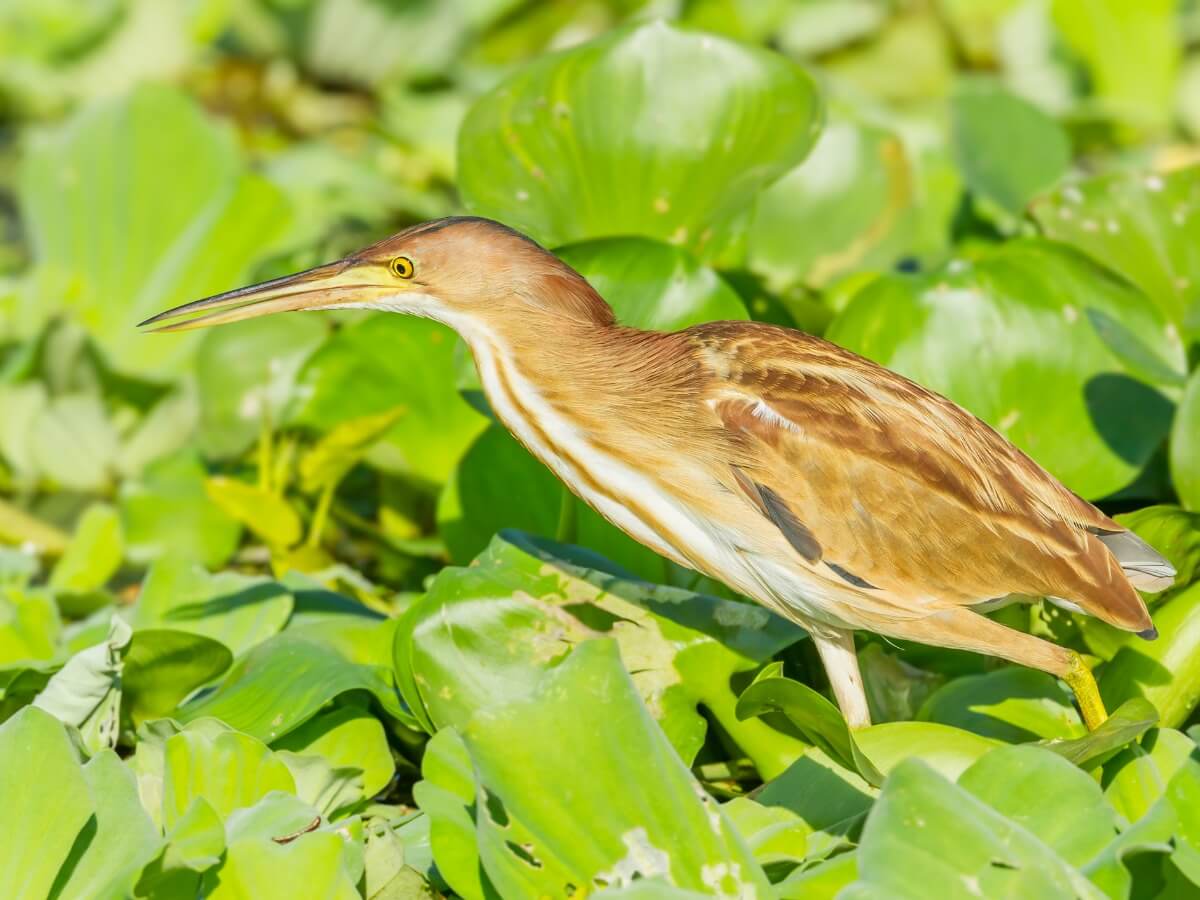The Little Bittern: Habitat and Characteristics

Near the bodies of water of the Old World, and submerged among the marshy vegetation, you can find a tiny and mysterious heron: the little bittern, with the scientific name Ixobrychus minutus.
Despite its extraordinarily wide distribution and elegant colors, this bird is often overlooked due to its inconspicuous habits. With a little patience, the little bittern can be seen in Spain between April and September, close to the most prominent river basins. If you want to learn more about this curious species, which has 3 different subspecies, keep reading.
Habitat and distribution of the little bittern
The little bittern has a vast distribution, spanning most of Europe, western Asia, and almost all of sub-Saharan Africa. Some populations also appear in the Mediterranean areas of Africa.
Some of its populations make long migratory trips, while others are sedentary. Eurasian specimens travel to the northern hemisphere in the summer season to breed. Once the reproductive season is over, these birds return to Africa, where they spend the winter.
By contrast, African populations are residents. They don’t migrate and spend the whole year in the same territories.
These herons inhabit all types of wetlands, preferably freshwater ones. They can be found in rivers, lagoons, marshes, reservoirs, renatured gravel pits, rice fields, etc. They occupy these areas especially when they have abundant marsh vegetation, such as reeds. In addition, they also benefit from the presence of nearby deciduous trees, such as willows (Salix) or alders (Alnus).

Characteristics of the little bittern
The little bitter (also called the common bittern) is the smallest heron in Europe. At about 13 to 15 inches in length and 19 to 35 inches in wingspan, it really is rather small.
Coupled with its small size, its appearance is very representative. Its neck is shorter and thicker than that of other herons. It’s usually tucked up so that the head rests close to the shoulders. However, it can be extended to reach the length of the rest of the body.
The head is large, laterally narrow, with a strong, long, and sharp bill. The legs are short and wide and end in large ‘hands’. Their bodies are small and compact.
Regarding plumage, there are three types of coloration in the specimens, depending on sex and age. Adult males are the most striking. Its plumage is black on the back, the upper part of the head, and the wings, which have a white window. The edges of the head are light gray and the ventral feathers are cream-colored.
The females have a similar coloration, but are less defined. The tones are less vivid and are less contrasted. In general, they are more brownish and with more stripes. The plumage of the juveniles may be reminiscent of that of the females, but even duller, with even more stripes, and even more brownish in color.
Behavior, feeding, and reproduction
This bird operates mainly at twilight, although it can also be seen during the day. It lives hidden among the reeds, which makes it relatively difficult to observe. With its long claws, it glides through the marsh vegetation with a secure grip. It can also walk and run on the ground.
Their diet consists of small vertebrates found in these semi-aquatic habitats, such as fish, amphibians, reptiles, and birds. It also includes a large number of invertebrates, among which we find crustaceans, arachnids, mollusks, and various insects, such as cricket larvae, adult crickets, grasshoppers, beetles, and others.
The little bittern is generally solitary, although it also moves in small groups or even in pairs. In the reproductive season, the adult specimens build nests with branches and reeds. These nests are hidden in masses of marsh vegetation or in trees and shrubs, above the surface of the water.
Threats and conservation status
The conservation status of this animal is still quite unknown. At present, its range of distribution is very extensive and its population remains numerous. Because of this, experts consider it to be of least concern by the International Union for Conservation of Nature (IUCN).
Despite this, and although the information available is limited, it seems that the populations of Ixobrychus minutus are experiencing a decline. At the moment, the decline isn’t very pronounced, and so the species isn’t in immediate danger.
The causes behind this decline haven’t been fully understood. Some culprits could be the destruction, contamination, and increasingly severe drying out of the wetlands that this animal needs to live in.
On the other hand, the desertification of wintering areas in Africa could be especially relevant in the decline of European populations. Another possible threat are the changes in how humans use water. As you can see, all these threats are a direct cause or consequence of human activity.

The little bittern is a really fascinating heron, very different from its larger relatives. Fortunately, there are still good numbers of it around, but this could change as the planet’s wetlands continue to degrade. If we want to continue enjoying these birds, we must protect these valuable and abused ecosystems.
All cited sources were thoroughly reviewed by our team to ensure their quality, reliability, currency, and validity. The bibliography of this article was considered reliable and of academic or scientific accuracy.
- https://seo.org/ave/avetorillo-comun/
- https://ebird.org/species/litbit1?siteLanguage=es_ES
- https://www.heronconservation.org/herons-of-the-world/list-of-herons/little-bittern/
- BirdLife International. 2019. Ixobrychus minutus (amended version of 2018 assessment). The IUCN Red List of Threatened Species 2019: e.T22735766A155511258
- Blasco-Zumeta, J & Heinze, G-M. Avetorillo común (Ixobrychus minutus). Atlas de Identificación de las Aves de Aragón. 36: 1-9
- Svensson, L., Mullarney, K., Zetterström, D., & Grant, P. J. 2009. Guía de aves – España, Europa y región mediterránea. Ediciones Omega. Barcelona.
- Samraoui, F., Nedjah, R., Boucheker, A., Alfarhan, A. H., & Samraoui, B. 2012. Breeding ecology of the Little Bittern Ixobrychus minutus in northeast Algeria. Bird Study, 59: 496-503.
This text is provided for informational purposes only and does not replace consultation with a professional. If in doubt, consult your specialist.